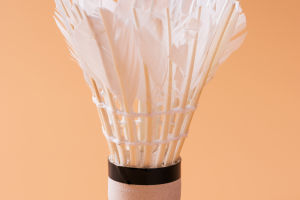Smart Skiing, Safe Slopes
Skiing is a thrilling and demanding sport, but it also carries inherent risks due to its high speeds and complex movements.
To ensure a safe and enjoyable experience, it is crucial to adopt practices that minimize the risk of injury. Here are some essential tips to help skiers avoid injuries and enhance their overall safety on the slopes.
Choose the Right Equipment
The first step in preventing injuries is selecting the appropriate ski equipment. Your skis, boots, and poles should be suited to your skiing level and physical condition. The length and width of the skis should be chosen based on your height, weight, and skiing style.
Properly fitting ski boots that support your ankles are essential for stability and control. Additionally, the ski poles should be the correct length for your height to maintain balance and comfort.
When purchasing or renting equipment, ensure that it meets current safety standards and has been inspected and adjusted by a professional. Wearing a well-fitted helmet, goggles, and gloves is crucial, as these protective gear items can significantly reduce the risk of injury.
Learn the Right Skiing Technique
Mastering proper skiing techniques is vital for injury prevention. Beginners should seek instruction from a professional coach to learn fundamental skills such as correct posture, turning techniques, and braking methods.
It is important to avoid attempting advanced maneuvers or navigating challenging terrain before gaining sufficient skill and experience.
Knowing how to fall correctly is another key aspect of skiing safely. Avoid falling with your arms outstretched or keeping your body rigid, as this can lead to fractures or other serious injuries. Instead, focus on relaxing your body and rolling with the fall to minimize the impact and reduce the risk of injury.
Focus on Physical Exercise and Warm-Up
Warming up before skiing is crucial for preventing injuries. Skiing demands full-body coordination, and flexibility and strength play significant roles in reducing injury risk.
Engaging in warm-up exercises helps activate your muscles, enhance joint flexibility, and prepare your body for the physical demands of skiing. Effective warm-ups include full-body stretching and aerobic activities such as jogging and dynamic stretches.
In addition to warming up, regular physical conditioning is essential. Skiing requires not only strength but also good core stability and leg muscle endurance. Incorporate targeted strength training and core exercises into your routine to improve stability and reduce injury risk.
Emphasize exercises that strengthen the thighs, abdomen, and lower back, as these areas are crucial for skiing performance and safety.
Pay Attention to the Conditions of the Ski Resort
The conditions of the ski resort can significantly impact your safety. Before heading out, check the weather forecast and snow conditions to avoid skiing in adverse weather, such as strong winds or blizzards. Poor visibility and subpar snow quality can make skiing more challenging and dangerous.
Familiarize yourself with the ski resort's terrain and difficulty levels. Avoid skiing on slopes that exceed your ability level. Ski resorts typically categorize slopes by difficulty, so choose beginner slopes if you're new to skiing and gradually progress to more challenging terrain as your skills improve.
Always follow the ski resort’s rules and signage, maintain a safe distance from others, and avoid venturing into unmarked or restricted areas.
Control Skiing Speed and Stay Focused
The speed at which you ski has a direct impact on your safety. Excessive speed can lead to a loss of control, increasing the likelihood of falls and collisions. Adjust your speed according to your skill level and the conditions of the ski slope.
Avoid speeding in crowded areas and refrain from sudden braking or sharp turns, as these actions can destabilize you and increase the risk of accidents.
Maintaining concentration is also crucial for safe skiing. Stay vigilant about your surroundings and be aware of other skiers. Anticipate potential hazards and avoid distractions such as using a mobile phone or engaging in conversations, as these can impair your awareness and reaction time.
Skiing offers exhilarating experiences, but it requires skiers to be mindful of safety practices. By following these guidelines, you can enjoy the thrill of skiing while ensuring a safe and rewarding experience on the slopes.


